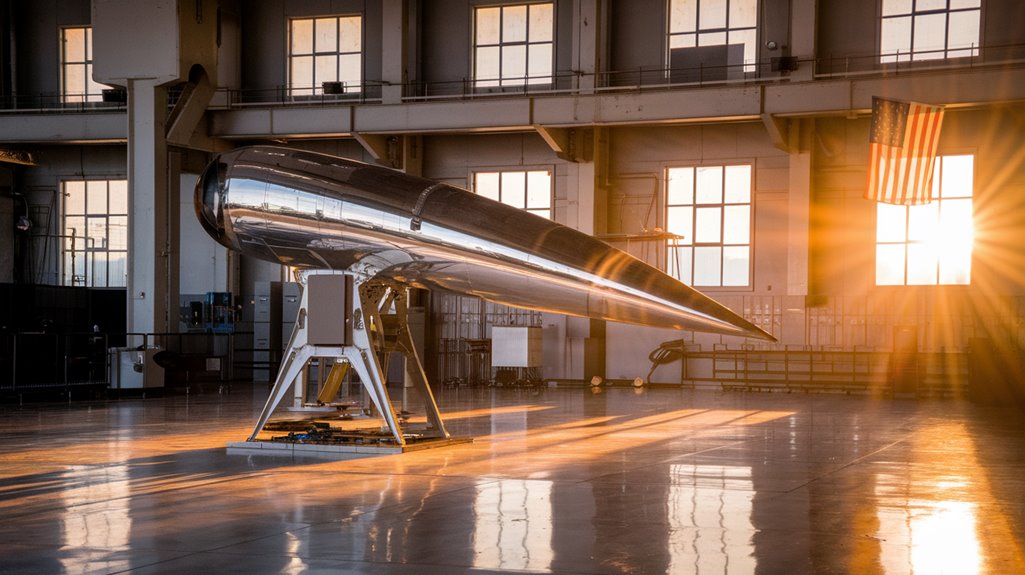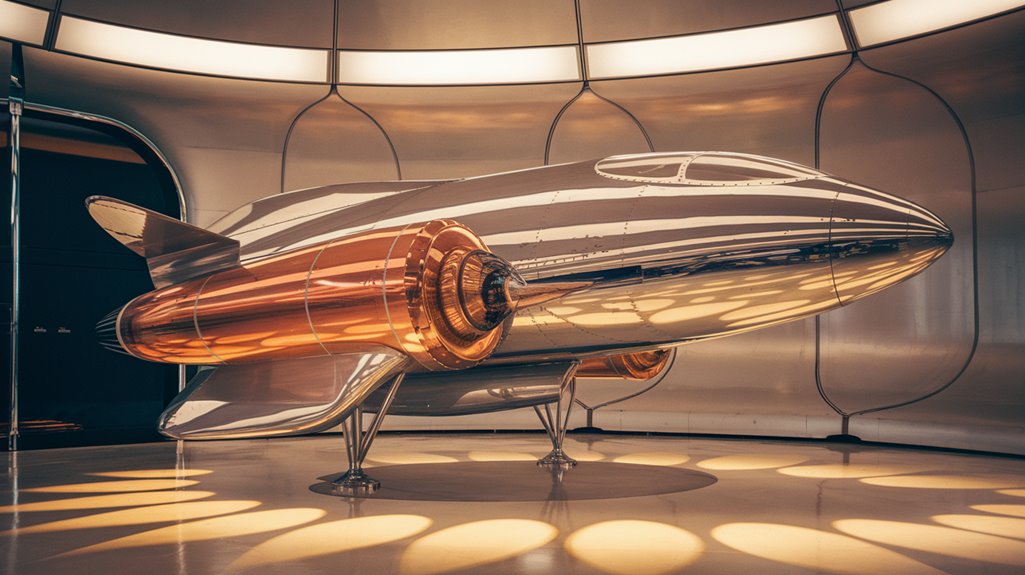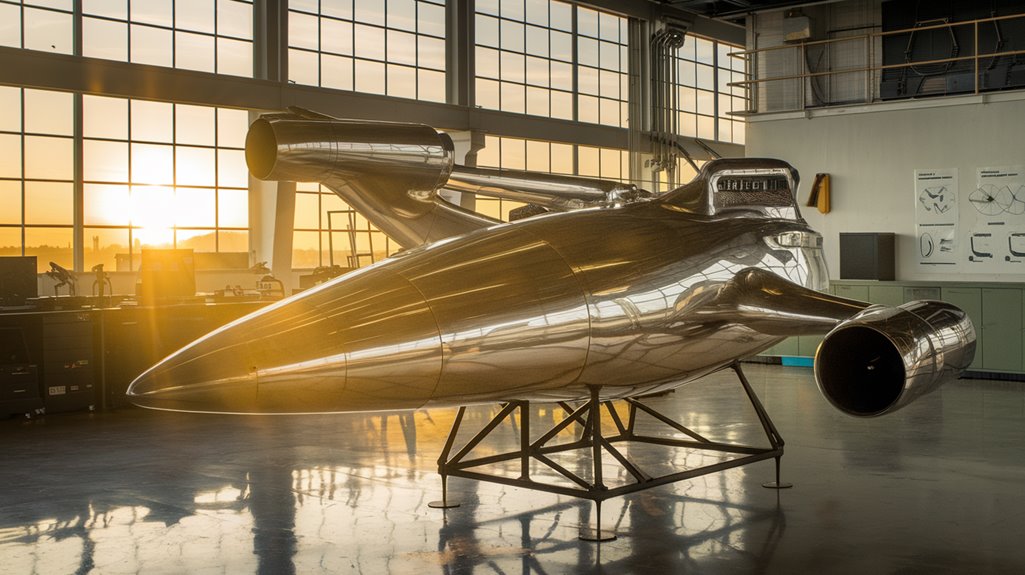The Jetpack Race: Why We Still Don’t Fly to Work
You've probably imagined zooming past rush hour traffic in your personal jetpack, but reality hasn't quite caught up with those Jetsons-inspired dreams. Despite decades of innovation and millions in research funding, you still can't skip your morning commute by taking to the skies. The intersection of cutting-edge technology, safety regulations, and practical limitations has created a complex web of challenges that keeps personal flight just out of reach—but that's only part of the story.
The Dream vs. Reality: Understanding Modern Jetpack Technology

While science fiction has long portrayed jetpacks as a symbol of futuristic personal flight, today's technology offers both promising advances and sobering limitations.
You'll find modern jetpacks equipped with sophisticated jet turbines and ducted fans that provide better flight stability than their rocket-powered predecessors. These propulsion advancements have enabled longer flights and improved control systems. The development of three-point stability has revolutionized how pilots maintain balance during flight. Current models face safety concerns that significantly limit their widespread adoption.
Yet, you're still facing significant hurdles before jetpacks become your daily commute option. Current models can only stay airborne for a few minutes, and they're struggling with the fundamental challenge of balancing engine efficiency with weight.
While companies are developing exciting innovations like electric propulsion and AI-assisted controls, the gap between sci-fi dreams and reality remains substantial. We're making progress, but personal flight still faces critical technical and safety challenges.
Breaking Down the Price Tag: The True Cost of Personal Flight
Beyond the technical challenges of jetpack development lies another significant barrier: the financial reality of personal flight.
For better understanding, we need to break down these complex costs into simpler terms that affect everyday consumers.
When you examine current cost factors in personal aviation, even conventional private flight options reveal the staggering expenses you'd face with jetpack technology.
Consider these eye-opening charter pricing examples from today's private aviation:
- A light jet's fuel costs alone range from $720 to $3,000 per hour
- Landing fees can reach $1,000 per touchdown
- Federal Excise Tax adds 7.5% to domestic flights
You'll find that private flight expenses multiply quickly through base fares, crew costs, and additional services. Today's private jet charters typically cost between 1,200 to 10,000 dollars per billable flight hour.
Even if jetpack technology becomes viable, the associated costs would likely mirror or exceed these figures, making personal flight an exclusive luxury rather than a practical commuting option.
Safety First: Why Regulations Matter in Personal Aviation
As you explore the world of personal aviation, you'll quickly discover that safety regulations form the backbone of every flight operation. The FAA oversees all aspects of civil aviation in the United States, enforcing strict regulatory compliance through various certifications and training requirements. Sustainable aviation fuel is becoming increasingly important for reducing environmental impact.
Whether you're operating under Part 91 for private flights or Part 135 for commercial operations, you'll need to follow specific safety protocols that govern everything from pilot licensing to aircraft maintenance. These regulations aren't just bureaucratic red tape – they're essential safeguards that protect both pilots and passengers. Modern jet pack operators require extensive pilot training, reflecting the inherent risks of these devices.
International standards set by ICAO further enhance these safety measures, especially if you're planning cross-border flights.
You'll need to complete mandatory training, maintain current certifications, and implement proper Safety Management Systems to guarantee your operations meet both domestic and international requirements.
Battery Bottlenecks: The Energy Challenge Holding Us Back
Despite significant advances in personal aviation technology, battery limitations remain the greatest obstacle to achieving practical electric jetpacks.
You'll find today's batteries simply can't match the energy density needed for sustained personal flight, even as battery improvements continue at an evolutionary pace.
Three key challenges stand between you and your dream of electric flight:
- Current batteries lack the power-to-weight ratio needed for VTOL aircraft
- Heat management issues cause battery swelling and trigger safety shutdowns
- Frequent recharging requirements make extended flights impractical
While energy breakthroughs seem inevitable, they haven't happened yet. Compared to traditional jet fuel which offers 50 times more density, current battery technology remains woefully inadequate for aviation applications. JetPack Aviation achieved success using turbojet engines instead of electric power.
The good news? Massive investments in electric vehicles and drone technology are accelerating battery research.
As engineers work toward that pivotal step change in battery chemistry, you're getting closer to the day when personal electric flight becomes reality.
The Military Edge: How Defense Interests Shape Civilian Innovation

While the military once led the charge in technological innovation, today's landscape tells a different story. Since the 1990s, private sector R&D has surpassed government funding by up to four times, marking a dramatic shift in technological dominance.
World War I and beyond fundamentally demonstrated how battlefield superiority depends on technological advancement.
You'll find military innovation now heavily relies on civilian collaboration, adopting an "Open Innovation" approach to keep pace.
Take the jetpack experiments of the 1950s and '60s – what began as military projects have evolved into civilian pursuits. The 1961 TRECOM report specifically identified jetpacks as a promising solution for enhancing infantry mobility. This transformation reflects a broader pattern where defense sectors worldwide tap into private sector breakthroughs for their advancement.
Countries like the US and China are racing to perfect their civil-military integration, but the civilian sector's culture of open-source sharing and rapid development has created an advantage that's unlikely to reverse.










